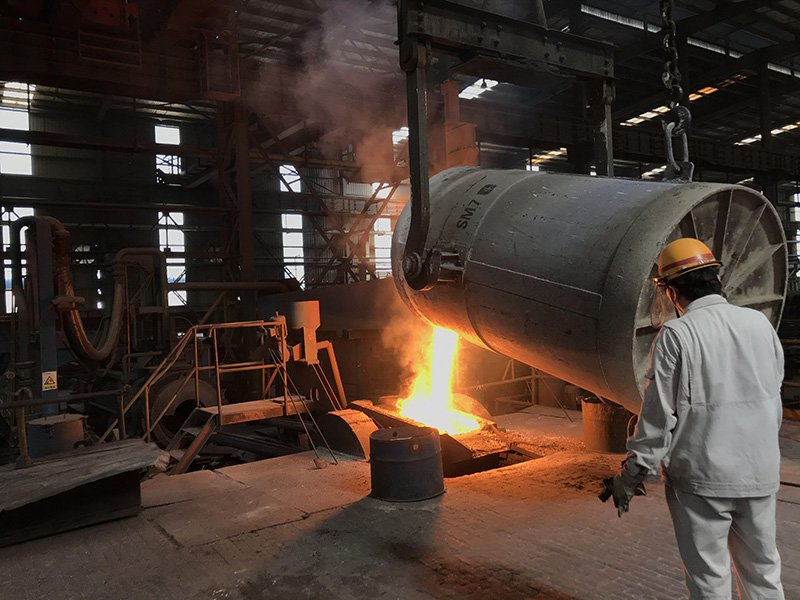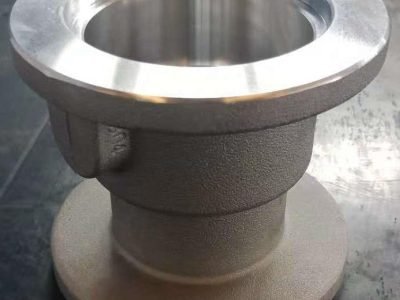duplex stainless steel investment casting

Duplex stainless steel, known for its excellent corrosion resistance and mechanical properties, has become a popular choice in various industries. This article aims to provide an in-depth analysis of duplex stainless steel investment casting, its applications, and the advantages it offers. With an emphasis on the professional perspective, we will explore the casting process, material selection, and quality control aspects associated with this technique.
1. Casting Process
The investment casting process is a precision casting method that involves creating a wax pattern, covering it with a ceramic shell, and then melting the wax to leave a hollow cavity. The molten metal is then poured into the cavity, where it solidifies and takes the shape of the original wax pattern. Duplex stainless steel investment casting, therefore, requires careful consideration of the casting process to ensure the desired quality and properties of the final product.
1.1 Pattern Design
The pattern design plays a crucial role in the investment casting process. For duplex stainless steel, it is essential to consider the following factors:
– Pattern complexity: A simple pattern design is preferred to minimize the risk of defects.
– Pattern material: The choice of pattern material should be compatible with the duplex stainless steel and withstand the casting process.
– Pattern shrinkage: The pattern must be designed to account for the shrinkage that occurs during solidification.
1.2 Shell Molding
The ceramic shell is a crucial component of the investment casting process, as it determines the quality of the final product. The following aspects should be considered when preparing the shell:
– Shell material: The choice of shell material should be compatible with the duplex stainless steel and withstand the casting process.
– Shell thickness: The shell thickness should be sufficient to support the molten metal during casting and prevent any defects.
– Shell curing: Proper curing of the shell is essential to ensure its strength and integrity.
1.3 Melting and Pouring
The melting and pouring process is critical to the quality of the castings. The following factors should be considered:
– Melting temperature: The melting temperature of the duplex stainless steel should be carefully controlled to prevent any defects.
– Pouring speed: The pouring speed should be optimized to minimize the risk of defects.
– Cooling rate: The cooling rate should be controlled to ensure the desired microstructure and mechanical properties.
2. Material Selection
Selecting the appropriate duplex stainless steel grade is crucial for achieving the desired performance in investment casting applications. The following factors should be considered when choosing the material:
2.1 Grade Selection
– The grade of duplex stainless steel should be selected based on the specific application requirements, such as corrosion resistance, mechanical properties, and cost.
– Common grades used in investment casting include 2205, 2304, and 2507.
2.2 Composition
– The composition of the duplex stainless steel should be optimized to ensure the desired properties, such as strength, ductility, and corrosion resistance.
– Key elements in the composition include chromium, nickel, molybdenum, nitrogen, and copper.
2.3 Microstructure
– The microstructure of the duplex stainless steel should be carefully controlled to ensure the desired properties.
– The microstructure should consist of a fine-grained ferrite-pearlite structure.
3. Quality Control
Quality control is essential in the investment casting process to ensure the desired quality and performance of the final product. The following aspects should be considered:
3.1 Inspection
– Visual inspection: The castings should be visually inspected for any surface defects, such as cracks, pores, and inclusions.
– Dimensional inspection: The castings should be measured to ensure they meet the required specifications.
– Non-destructive testing: Non-destructive testing methods, such as ultrasonic testing and magnetic particle inspection, should be used to detect internal defects.
3.2 Heat Treatment
– Heat treatment is an essential process for achieving the desired properties of the duplex stainless steel investment castings.
– The heat treatment process should be carefully controlled to ensure the desired microstructure and mechanical properties.
4. Applications
Duplex stainless steel investment casting is widely used in various industries due to its excellent properties and versatility. Some common applications include:
– Chemical processing equipment
– Pumps and valves
– Heat exchangers
– Pressure vessels
– Offshore and marine equipment
5. Advantages
The use of duplex stainless steel investment casting offers several advantages, including:
– Excellent corrosion resistance
– High strength and ductility
– Good weldability
– Cost-effective
– Versatile applications
6. Conclusion
Duplex stainless steel investment casting is a valuable technique that offers numerous advantages in various industries. By carefully considering the casting process, material selection, and quality control aspects, manufacturers can produce high-quality castings that meet the specific requirements of their applications.
7. Commonly Asked Questions
1. What is the difference between duplex stainless steel and other stainless steel grades?
Duplex stainless steel combines the strength of ferritic and austenitic stainless steels, offering excellent corrosion resistance and mechanical properties.
2. How does the investment casting process differ from other casting methods?
Investment casting allows for complex shapes and high precision, making it suitable for intricate components.
3. What factors should be considered when selecting a duplex stainless steel grade for investment casting?
The grade should be selected based on the specific application requirements, such as corrosion resistance, mechanical properties, and cost.
4. How can quality control be improved in the investment casting process?
Regular inspection, non-destructive testing, and proper heat treatment can help ensure the quality of the final product.
5. What are the advantages of using duplex stainless steel investment casting?
The main advantages include excellent corrosion resistance, high strength and ductility, good weldability, cost-effectiveness, and versatile applications.
